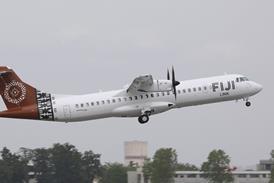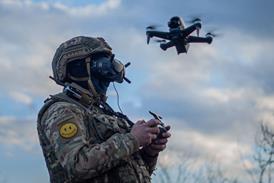In October, Airbus Industrie celebrated 25 years since its first aircraft took to the air. The occasion only served to show how far the consortium has come since those early days as a fledgling European challenge to the dominant US manufacturers. By the end of an eventful 1997, the point was underlined as Airbus unveiled a record sales performance.
The Aerospace Personality of the Year Award 1998 goes to Jean Pierson, the president and chief executive who has led Airbus' emergence as a world-class competitor over more than a decade.
From the start, Pierson's fortunes were linked to those of Toulouse, now home to Airbus and undisputed centre of Europe's civil aircraft ambitions. After graduating from the French national aeronautical institute, he started out in 1963 as a young production engineer with Sud-Aviation - later to emerge as part of the new Aerospatiale. Four years later he was promoted to production manager for the anglo-French Concorde programme in Toulouse - a first taste of future European civil aircraft collaboration to come. By 1972 Pierson was put in charge of Aerospatiale's light aircraft subsidiary, SOCATA, but was soon called back to run Aerospatiale's final assembly lines at Toulouse as the first Airbus A300s began to roll off the lines.
During his tenure there, he was credited with transforming the plant into one of the most modern aircraft production sites in the world.
By 1983 he had become manager of Aerospatiale's aircraft business, representing the French group on the Airbus board, as well as overseeing its ATR turboprop joint venture.
When Pierson first took up the top job at Airbus Industrie in April 1985, the consortium had already overcome the first major hurdle in establishing itself as a serious contender in the world airliner market. The A300 and A310 were carving out a niche as the first twin-engined widebody family. The consortium had taken its first step into the single-aisle market with the launch of the A320 programme. It also marked the true dawn of fly by wire technology - a centrepiece of Airbus technology.
Pierson's achievement has been to help the consortium build on this technical base with commercial success. As Pierson now prepares to stand down as Airbus president at the end of March, he hands over to his successor a highly competitive business, with a full product range and healthy orderbook, which is on course to become Europe's largest industrial company.
The consortium's strength was underlined in 1997 as it cruised to the best sales performance in its history. The tally of 460 new aircraft orders, worth some $30 billion, was clearly a record. It also gave the consortium more than 40%of the world's orders for large airliners, taking Airbus closer to its long-term goal of winning a 50%market share early in the next century. Deliveries too have ramped up rapidly, and with deceptive ease, to meet the booming demand. In 1997 the assembly lines at Toulouse and Hamburg turned out over 180 aircraft and Airbus is gearing up for a new high of 235 for the coming year.
With new launches during the year, Airbus also began to fill out the top end of its product range. The stretched A340-600 and longer-range A340-500 have helped give Airbus back the initiative in the 250- to 350-seat aircraft market, with airline commitments for nearly 100 of the new types. It completes a line-up of new generation long haul aircraft which Airbus had first pioneered ten years before with the launch of the original A330/A340.
Pierson's drive to compete across the whole size range has been demonstrated by his support for the A3XX programme, to give Airbus entry into the market above 400 seats. Although he will not now see its official launch, much of the technical and commercial groundwork for the project has been laid.
More fundamentally, Pierson's final year at the helm has seen real progress among the four consortium partners towards the restructuring of Airbus from consortium to standalone company. Aerospatiale, British Aerospace, Daimler-Benz Aerospace and CASA are now agreed that the Airbus Single Corporate Entity (SCE) must be in place by the start of 1999 - a cause that Pierson has helped to champion.
The details are still being thrashed out, but there is no question that the Airbus SCE stands as the cornerstone of Europe's long overdue plans to restructure its fragmented aerospace industry. This final phase in Airbus' coming of age will now take place under new president Noel Forgeard, but he can thank Pierson for laying the groundwork of commercial success from which to build.
Source: Flight International























